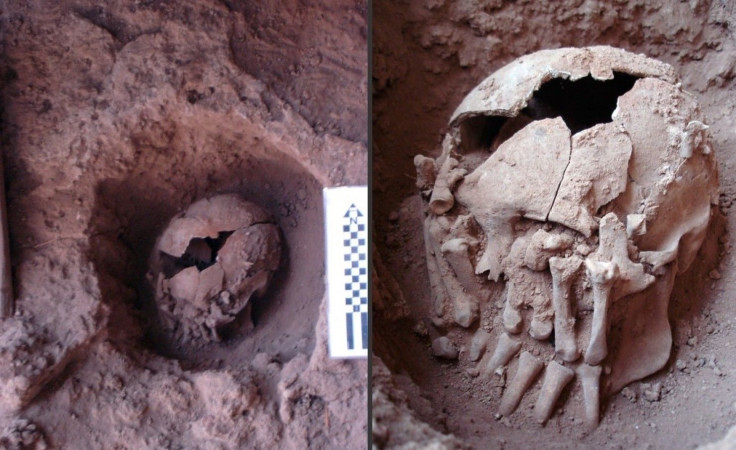9,000-Year-Old Ritual Decapitated Skull Discovered In Brazil

A 9,000-year-old skull found in Brazil might just be the oldest example of decapitation in the American continent. An international team of researcher claims to have recovered the beheaded skull arranged in a strange position, possibly symbolizing something relevant at that time.
The skull was recovered from a rock shelter in an archaeological site known as Lapa do Santo, situated in east-central Brazil. The researchers estimate that the 9,127- to 9,438-year-old skull belongs to a young man, whose grave was discovered 22 inches beneath the surface of the Earth. Various limestone slabs were found over the grave.
“This is the oldest case of decapitation found in the New World, leading to a re-evaluation of the previous interpretations of this practice, particularly with regards to its origins and geographic dispersion,” the study authors wrote about their discovery, explained in the journal PLOS ONE.
What fascinated the researchers were the strange arrangement of the skull and the hands. The hands of the young man were placed over his skull and the jaw recovered from the skull had V-shaped markings.
The left hand over the skull pointed to the right side of the face while the right hand pointed toward the left. The analysis of the skull has made researchers believe that a horrific ritual must have been carried out on the man after his death.
"In the apparent absence of wealth goods or elaborate architecture, Lagoa Santa’s inhabitants seemed to be using the human body to reify and express their cosmological principles concerning death," the authors wrote in the study.
The discovery made by the researchers seems to have pushed back the previously thought origin of decapitation by nearly 4,000 years. Previously known instances of beheading were believed to have taken place 3,000 years ago among an ancient population living in the area of the Andes mountains. Therefore, the recovery of the skull from Brazil has expanded the geographic range where decapitation was ever thought to occur.
The researchers are not sure where the rest of the body exists.
© Copyright IBTimes 2024. All rights reserved.











